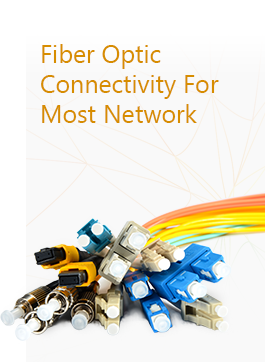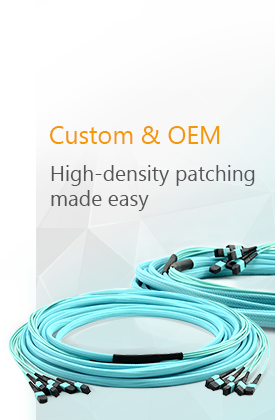In the ever-evolving landscape of telecommunications, QSFP (Quad Small Form-factor Pluggable) cables have emerged as a game-changer, enabling seamless, high-density, and high-speed data transmission. QSFP cables, with their innovative design and robust capabilities, are revolutionizing the way we connect our data centers, servers, and high-performance computing systems. By harnessing the power of advanced optical and copper technologies, these cables pave the way for future-proof communication networks.
Advantages of QSFP Cables
One of the most significant advantages of QSFP cables lies in their exceptional density and speed. With up to four channels packed into a compact form factor, they offer aggregate data rates that can exceed 400Gbps, making them ideal for modern data centers and demanding network infrastructures. This high-density design allows for efficient use of space, enabling more ports to be deployed within a limited footprint. Furthermore, QSFP cables are known for their compatibility with various industry standards, such as MSA (Multi-Source Agreement) and IEEE, ensuring seamless integration with various vendors' equipment.
Another crucial advantage is their flexibility. QSFP cables support a wide range of transmission protocols, including Ethernet, Fibre Channel, and InfiniBand, allowing them to be deployed in diverse application scenarios. From data center interconnects to high-performance computing clusters, QSFP cables provide a versatile solution that can adapt to various networking needs. Moreover, they are designed to offer low power consumption, making them a cost-effective and energy-efficient choice for large-scale deployments.
Usage Considerations
While QSFP cables offer numerous benefits, there are certain usage considerations to keep in mind. Proper cable management is crucial to ensure optimal performance and reliability. Given their high-speed capabilities, it's essential to minimize bending radii and avoid excessive strain on the cables, which could lead to signal degradation or physical damage. Additionally, it's important to choose QSFP cables that are certified and tested to ensure compatibility with your existing equipment and to meet your specific network requirements.
Parameter Support and Compatibility
QSFP cables support a wide range of data rates and transmission technologies, making them suitable for various networking standards. They are designed to be fully compatible with industry-standard specifications such as IEEE 802.3ba (40 Gb/s) and IEEE 802.3bj (100 Gb/s), as well as InfiniBand QDR, FDR, and EDR specifications. This compatibility ensures seamless integration with existing and future network infrastructures, enabling smooth upgrades and expansions.
Moreover, QSFP cables are available in both active and passive versions, each with its unique set of advantages. Active QSFP cables use integrated electronics to amplify signals over longer distances, while passive cables rely on the intrinsic properties of the transmission medium (such as copper or fiber) for signal propagation. Choosing the right type of QSFP cable depends on your specific networking needs, including the desired data rate, transmission distance, and power consumption considerations.
In conclusion, QSFP cables are a vital component of modern communication networks, offering unparalleled density, speed, and flexibility. By harnessing their advantages and adhering to proper usage considerations, organizations can unlock the full potential of their data centers and high-performance computing systems. As technology continues to advance, QSFP cables will play an increasingly important role in shaping the future of telecommunications.


